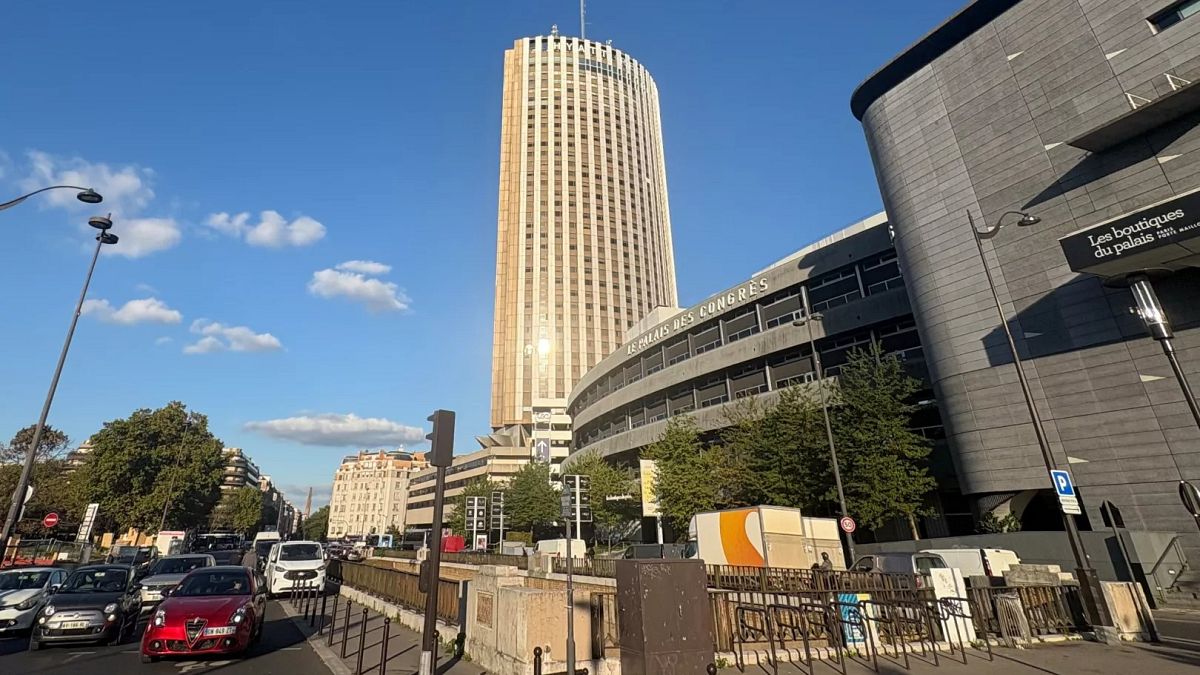AI is helping rescue a nearly extinct bird species


The Colossal Foundation has developed an AI algorithm that can detect the critically endangered tooth-billed pigeon's calls, helping conservationists locate the lost species.
Partnering with the Samoa Conservation Society (SCS), Colossal Biosciences' nonprofit arm hopes that this technology will lead to more sightings of this lost bird — and eventually assist in saving other endangered species as well.
Saving the tooth-billed pigeon, Samoa's national bird

The tooth-billed pigeon is a large bird native to Samoa's rainforests, and which has only been found within this one country. Also called the manumea or "little dodo," Samoa's national bird is one of the closest living relatives to the famously extinct dodo.
Unfortunately, genetics isn't the only aspect in which the two species are similar. The International Union for Conservation of Nature (IUCN) considers the tooth-billed pigeon to be critically endangered with fewer than 250 birds left, while the last known photograph of the species was taken in 2012.
It currently tops the list of priority species maintained by the IUCN's Pigeon and Dove Specialist Group (PDSG), with co-chair Joe Wood telling Mashable this is due to the pigeon's "lack of close relatives, extraordinary appearance, and genetic proximity to the dodo," as well it being "extremely rare and little-known."
Hopefully this won't be the case for much longer. Colossal's new bioacoustics AI algorithm aims to help conservationists identify the tooth-billed pigeon's calls, assisting them in locating and protecting the few birds that remain. Though the organisation has most frequently made headlines due to de-extinction efforts such as its genetically modified "dire wolves" or its woolly mammoth mice, Colossal considers such work to go hand-in-hand with conservation projects such as this.
"[Saving] lost species is one of the core conservation strategies," Colossal Foundation's executive director Matt James told Mashable. "We had this idea that, can you search for and find species that haven't been seen in 10 or more years? It is almost, in its own way, its own form of de-extinction."
Searching Samoa with AI and sound

Colossal's tooth-billed pigeon bioacoustics project was first sparked in 2023. While the PDSG and SCS had been working to save the tooth-billed pigeon for years, they were struggling to secure funding for a new expedition. Extensive searches had not only come up empty, but uncovered evidence of high feral cat populations likely to prey on the bird.
"There was a real concern that, faced with an undeniably bleak situation, our donors would conclude that their funds were better invested elsewhere and we would be unable to continue," Wood told Mashable.
Fortunately, Colossal offered the funds to continue the search, and March 2024 saw the first clear, unambiguous sighting of a tooth-billed pigeon in years obtained by field team member Vilikesa Masibalavu.
Significantly, Colossal also suggested that they could use bioacoustics to help ease some of the search's technical challenges, which would hopefully make such sightings more common. One of their biggest hurdles is the similarity of the tooth-billed pigeon's calls to the more common pacific imperial pigeon, an issue that machine learning could assist with.
Having bioacoustics for, specifically, the search and classification of birds is probably one of the best use cases for the technology.
"Specifically with things like birds, bioacoustics is just a great [tool]," Colossal Biosciences' co-founder and CEO Ben Lamm told Mashable. "When you've got small animals that can traverse large distances very, very quickly — and also not the easiest to find because they're in trees or bushes with leaves and whatnot — having bioacoustics for, specifically, the search and classification of birds is probably one of the best use cases for the technology."
"Bioacoustics has been used by a few researchers to search for the manumea in recent years," SCS conservation officer Moeumu Uili told Mashable. Uili was the last person to photograph a tooth-billed pigeon, capturing the image in 2013. "However, this method has not been widely adopted in Samoa for wildlife monitoring and was only recently introduced by SCS in our field surveys… [A] significant gap remained in data analysis skills, limiting our ability to process results efficiently and inform decision-making."
Colossal helped fill this gap. Developed specifically for this project, Colossal's AI algorithm has been used to analyse audio recorded in locations where the tooth-billed pigeon could historically be found, identifying 47 potential calls from the bird earlier this month. Considering the species hasn't been seen in over a decade, this is an invaluable signal that it hasn't yet gone extinct.
"Now that we can definitively say that we've identified calls of the tooth-billed pigeon, we've seen funding return to this effort," said James. "Now there's a new excitement."
"And it's a better use of the funding," added Lamm. "Because now they can say, 'Oh, here's four pockets we can go to,' versus searching everywhere and we know… they still exist and they're not extinct, versus we don't know if they even exist and we're searching everywhere."
How does Colossal's bioacoustics algorithm work?

Colossal had an extremely limited dataset to train its tooth-billed pigeon call classifier on. Researchers only had a five-minute audio clip containing just three tooth-billed pigeon calls to work with, which was recorded from a captive bird in Germany's Berlin Zoo during the '80s.
Despite this limitation, Colossal was able to use the audio sample to create a machine learning algorithm that could distinguish tooth-billed pigeon calls from more general sounds of birdlife in Samoa. This was done by taking audio from the adjacent American Samoa where the tooth-billed pigeon is not found, and using it as a control to filter out irrelevant noise.
Developed in parallel to its wolf bioacoustics program, Colossal states that its tooth-billed pigeon classification algorithm took just two weeks to create and can identify the bird's calls with 95 percent accuracy.
"There are only a few data points that the algorithm knows, and then it's able to sort of extrapolate from that, and say, number one, I don't think that's anything that you've told me is from American Samoa, and that's part of the de-noising process," James explained. "And then it can say, with relative confidence, this sounds very similar to the other project, the other calls you have given me [that belong to the tooth-billed pigeon]. And then as we have labelled that data set as we go, yes, that's a correct assumption, it's strengthened until we've got to this 95 percent mark."
Initially, the SCS' conservationists would download audio data from microphones located around the tooth-billed pigeon's potential habitat. They'd then transfer it to Colossal, which would run the audio through their AI classifier to identify potential tooth-billed pigeon calls. The location of the microphones which picked up calls would thus inform where the SCS should focus their search efforts.

Colossal is still collecting data to improve the algorithm's accuracy. However, it has now put the classifier into an app as well, enabling conservationists to upload audio and immediately analyse it on their phones within minutes.
"With immediate feedback, our team can quickly plan site visits and follow up on potential detections, improving our chances of locating and protecting the manumea in the wild," Uili told Mashable.
James further told Mashable that Colossal's wolf bioacoustics program helped develop a 360 camera with spatial audio which can remotely upload footage in real time, and is talking to SCS about how this might be used to find the tooth-billed pigeon as well.
"The moonshot is potentially we could even capture a few of the remaining wild [tooth-billed pigeons] to help put them into a human care setting where we could help make sure they don't go extinct, propagate the animal, and begin to re-release it back into the wild once we can address some of the invasive species and habitat loss issues that are occurring in Samoa," said James.
In addition to capturing live specimens, Wood stated that biobanking has become a new priority with Colossal's help. Biobanking is the collection and storage of biological samples for research and conservation.
"Given the rate of progress currently being made in the fields of genetic engineering and reproductive technology, [biobanking] seems like a crucial way of preserving future options," said Wood. "For the manumea, and indeed for many other species, it may well be that conventional conservation techniques are simply inadequate. These pioneering approaches could offer the only glimmer of hope."
[I]t may well be that conventional conservation techniques are simply inadequate. These pioneering approaches could offer the only glimmer of hope.
The ability of Colossal's bioacoustics algorithm to help locate Samoa's tooth-billed pigeon is a boon to conservationists. Even so, using AI to save an endangered species may seem ironic. Habitat loss is a significant issue contributing to such endangerment, and artificial intelligence is infamous for producing high greenhouse gas emissions.
Speaking to this point, Lamm noted that Colossal's bioacoustics algorithm is distinct from generative AI models in that it works with much less data and is far more targeted, requiring fewer resources.
"We have very small sample sets of this," said Lamm. "And we're also deploying in apps, we're also deploying locally. So we don't have to have a system where we're using a massive amount of distributed cloud infrastructure. We don't have to go out and cleanse and train all these different models."
Citizen scientists could help find lost species with an app

Though Colossal's AI model is specifically targeted at the tooth-billed pigeon, it has significant potential beyond this. In time it could be used to find other species as well, with Colossal having released the algorithm as open-source so that more conservationists can benefit from it.
"The tooth-billed pigeon has some of the most limited data on their calls in the world of any bird species," said James. "So we could begin to upload additional data of other critically endangered species, or really mostly birds, that we could then use to help identify other lost species."
"I think maybe over time you'll see more and more of these acoustic monitoring projects come out of it now that we've built this core AI system," said Lamm, noting that Colossal is "doubling down" on AI resources. "We're now layering in different classifiers on it which is pretty powerful, and all that's open-source for the world."
Such tools might not be restricted to researchers, either. In the future, Colossal hopes to enable citizen scientists to download its bioacoustics app themselves, so they too can help locate lost species by their calls.
"That's the dream," said Lamm. "While we have 48 conservation partners, Colossal can't save every species, right? Even if we had a trillion dollars, like, we just can't do that. And not even all of our partners can, not even all the conservation partners... we need citizen science."
There's still a significant way to go until a publicly available app such as this becomes a reality. Colossal's AI algorithm is still effectively in beta testing, with the SCS continuing to put it through its paces. Even so, Colossal's bioacoustics model holds exciting potential for the future of conservation.












































